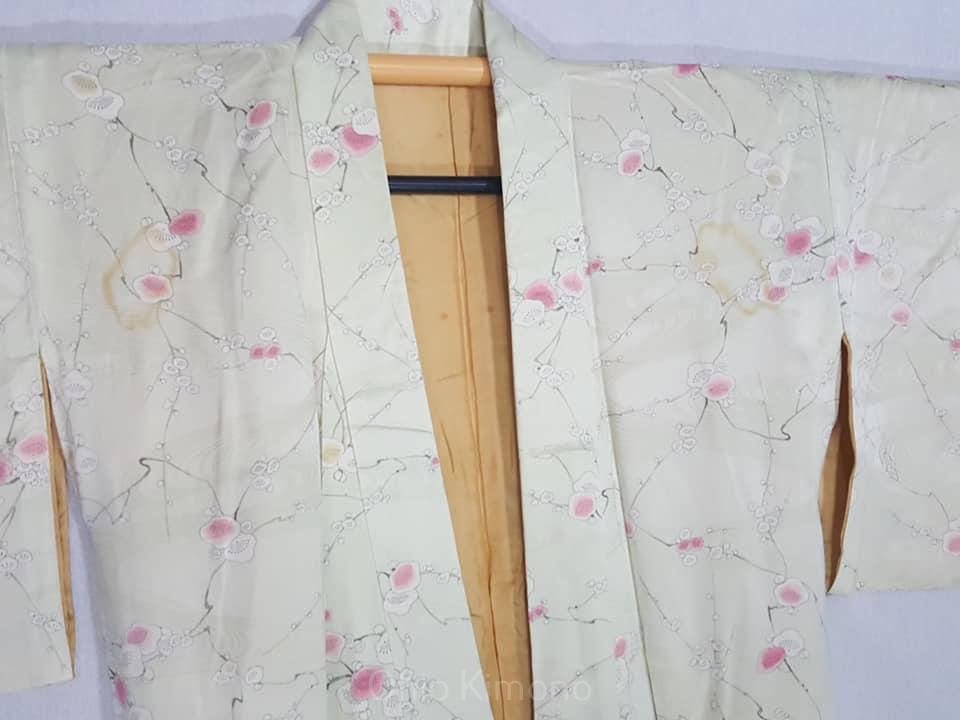Experiment: Kimono Cleaning
- Ohio Kimono

- Oct 16, 2018
- 3 min read
A common problem with vintage and antique clothing are stains. Stains present a wide variety of problems, and are difficult to treat. Effective stain treatment on textiles requires knowing the kind of fabric you are working with, the source of the stain, and speed. As with many vintage and antique authentic kimono we have none of those factors in our favor. Most Japanese kimono do not have tags that identify the materials they are made from, the stains present we most often know nothing about, and to top it off the stain has potentially in place for months, years, or even decades. With so many kimono passing through our store, we have seen a good number of beautiful kimono that would be the prized gem in a collection...if only not for its stains. Torn seams can be repaired, but stains...they are difficult to work with. We have read many articles about cleaning textiles, and in the end we have decided that it is time to begin trying to cleanin some of these kimono for ourselves. This first round of experiments involves 3 cleaning methods applied to 1 vintage kimono. There is a wealth of information online about what "works" but does it really work? Let's find out using some of the Ohio Kimono scrap stock.
Kimono Cleaning Methods
Method 1 - Straight Vodka, purchased at a store. It is distilled, and a higher proof. Using a fine mist stray bottle you soak the stain, and then blow dry it with a hair dryer.
Method 2 - 70% Isopropyl Alcohol, found in medical supplies. Using a fine mist stray bottle you soak the stain, and then blow dry it with a hair dryer.
Method 3 - Stain removal pen, gel based name brand found in stores. Following the directions on the bottle, we applied it, rubbed it in, let it sit, then hand washed. To be fair, the gel pen stain remover advised not being used on silk, even so I opted to do this for the sake of thoroughly experimenting and exploring options.
We tried all 3 methods on the same kimono, on what we can only guess are the same stains. This kimono did not have any problems with strong smells, and was generally pleasant in every aspect but the visible stains.
Step 1 - Applied all 3 methods to the kimono, on different locations.


Step 2 - After the Alcohol is applied, be certain to blow dry it. This will help present it from leaving begin a faint discoloration. Water stains silk, which is why it should not be used on it.

Step 3 - After I had blow dried the alcohol treatments dry, I then took the kimono down to hand wash the gel pen treatment spot. This involved using water. Water stains silk, which obviously is a problem. Even so, I opted to attempt this method for research purposes, knowing fully well that even if the gel pen treatment worked that I would have additional work to do to remove the water stain.

What were the results from all three cleaning methods used on the kimono? No visible improvement with any of the stains on this kimono. The gel pen resulted in water staining which would have to be treated additionally.

We will not be deterred, though these experiments did not yield desirable results we are armed now with the knowledge of what doesn't work. Other methods we will be testing on kimono soon will involve hydrogen peroxide mixes. Do you have a tip on how to remove stains from kimono? Feel free to send it our way!


